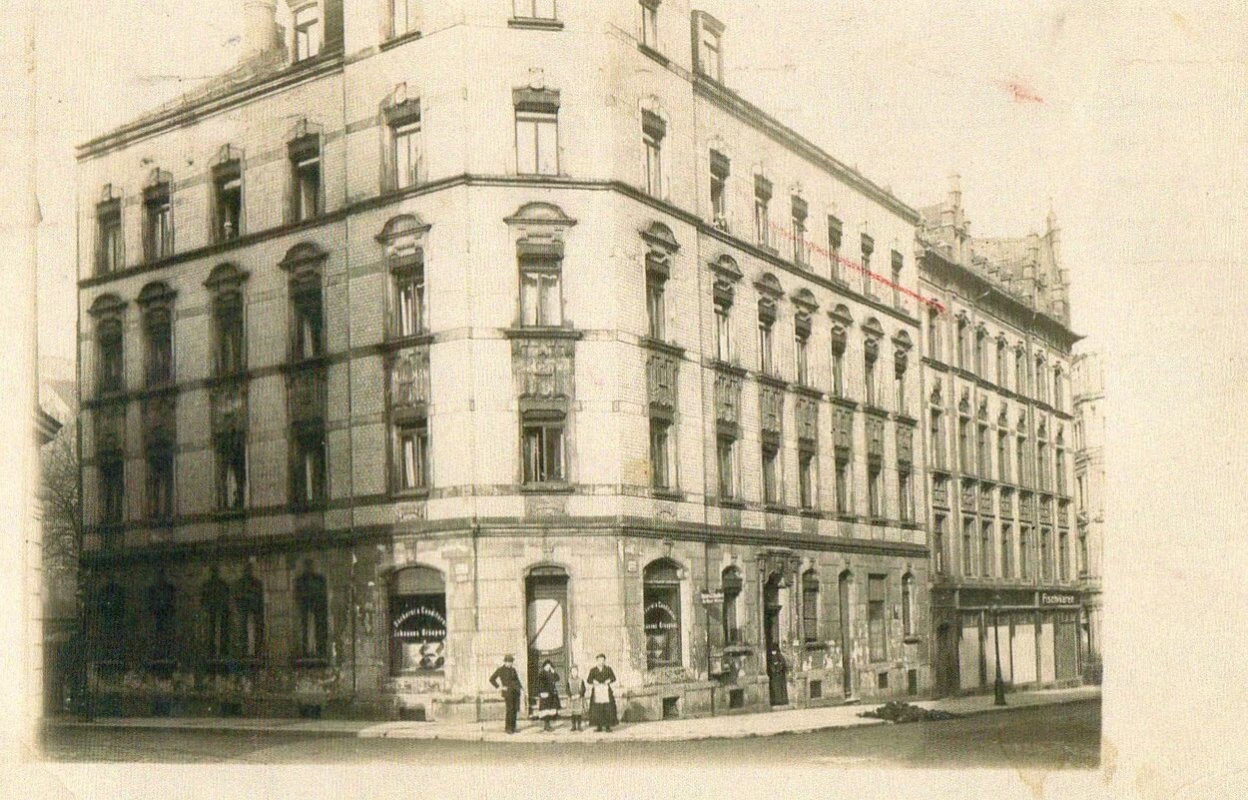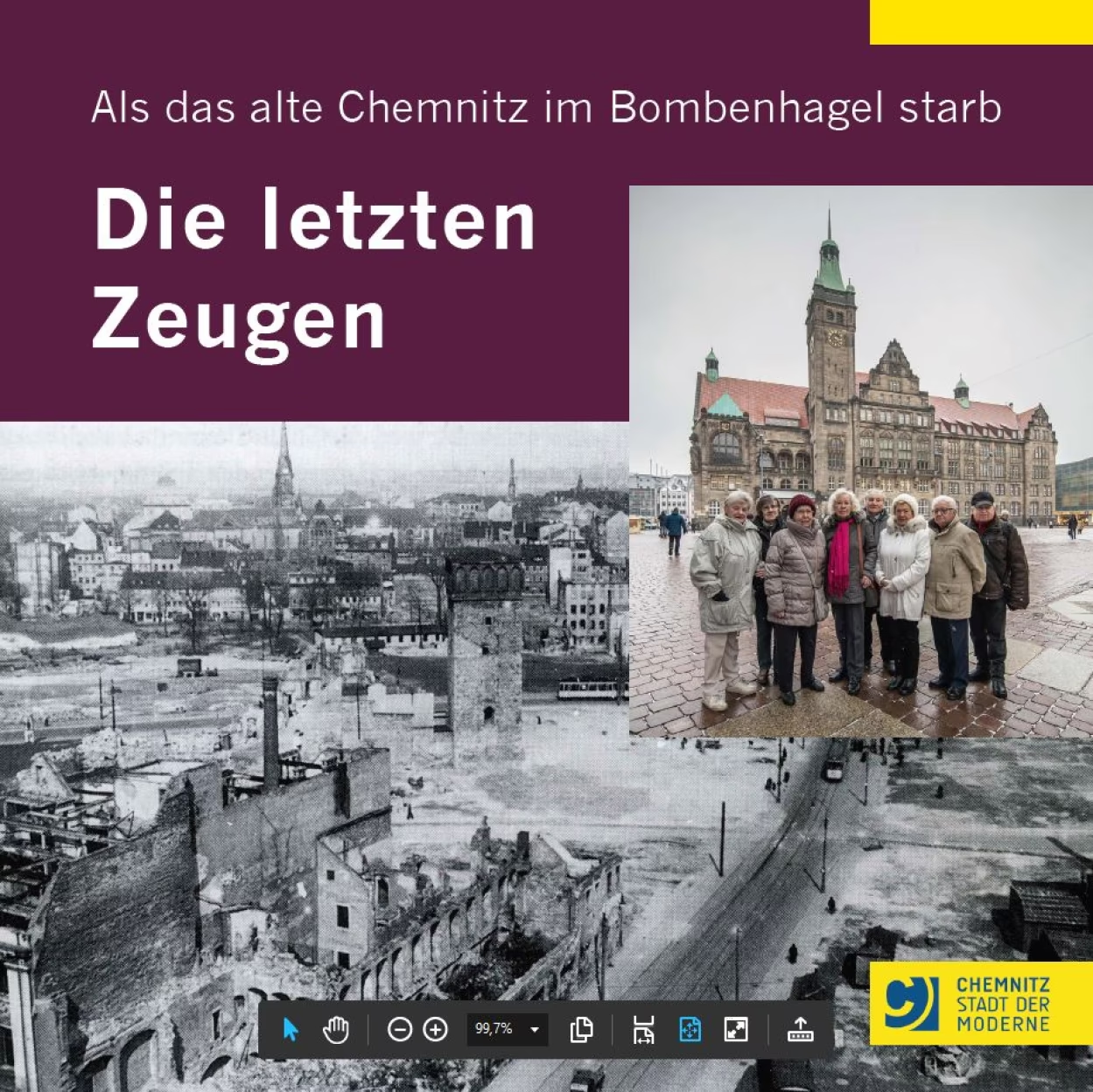Chemnitz contemporary witnesses: Gottfried Weise

In 1944, the Allied forces began to extend their air raids on German cities to central Germany. When darkness fell, all windows had to be darkened so that no light fell on the road. Motor vehicles had to be driven with their headlights covered and only with slits for viewing. The population was required to wear illuminated badges so that you could recognise when someone was coming towards you in the dark.
We could always hear on the radio when the enemy bomber units were approaching. The radio announcements always started with a signal (we said the alarm sounds). We in Saxony were not spared this either. The first bombs also fell in Chemnitz at the beginning of 1945. Young Hitler Youth were drafted as anti-aircraft helpers. As a young boy, I was assigned to distribute food to the bombed-out population. To do this, I was ordered with two other Pimpfen to the cafeteria in Brückenstraße. A delivery van was waiting there and we loaded up thermal containers with hot food and drove to the affected areas to provide the residents with this food.
We were often sent home from school at the pre-alarm and lessons were cancelled. More and more often we were woken up at night by air raid alarms. That's why we children only partially undressed before going to bed so that we could reach the air raid shelter as quickly as possible. It's a strange feeling when the bombs are falling outside and the small children are screaming in the cellar and the older ones are praying and hoping that their house won't be hit and you are helplessly at their mercy. The lights go out and only candlelight illuminates the room.
Then, in February, the terrible attack on Dresden. I remember a conversation in our bakery. A customer said to my mother, "Mrs Weise, the bombers are coming to Chemnitz again. And then again at lunchtime and in the evening. I don't like your house at all. Take your children and drive away from here." He was right. Our house was also hit during the second attack on 5 March 1945. Our house at Theresenstr. 4 and the neighbouring houses were probably hit by incendiary bombs. The "Goldener Anker" area was destroyed by high-explosive bombs. When we left our house through the emergency exit in the basement (at that time it was compulsory to break through a wall from one house to another so that you could leave the house through the neighbouring building if necessary), we could already see burning houses all around and ran towards the industrial school on Schlageterplatz (now the Park of the Victims of Fascism), where many people had already gathered. At dawn, a procession of many people with the few belongings in their rucksacks set off along Zschopauerstraße through the burning rows of houses out of town towards Zschopau.
I think it was Zschopau, where we found shelter in a gymnasium. My father went back to Chemnitz the next day to see what was left. After three days, we were also able to return to Chemnitz. My father had found an empty bakery in Augustusburger Straße, which we were able to take over. We had a home again. Every time an air raid alarm went off, we went to an air raid shelter because there was no cellar in the house. We were largely spared further air raids until the Russian troops marched in.



